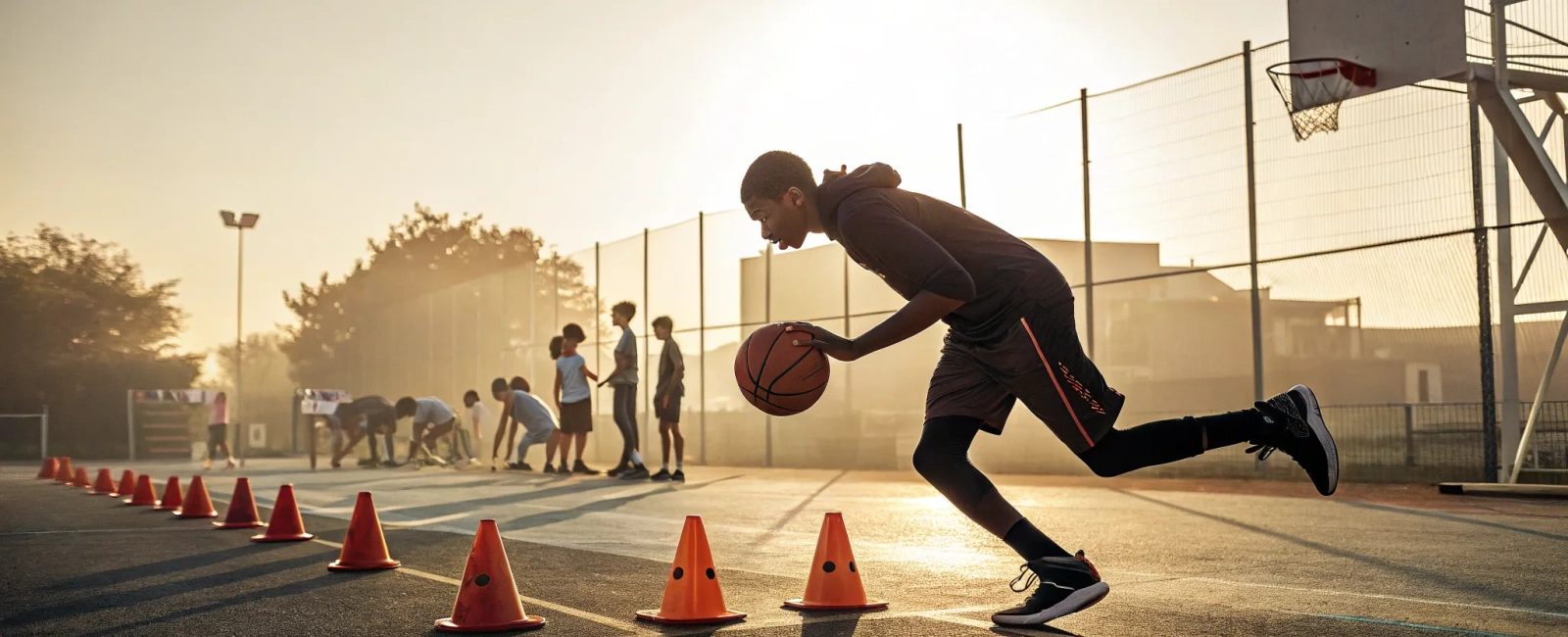Transforming Devastating ACL Setbacks into Basketball Triumphs

There I was, sprawled out on the hardwood, a sharp pain shooting through my knee and a whirlwind of thoughts racing through my mind. The crowd’s cheers faded into the background as I grappled with the harsh reality: an ACL tear. It felt like my basketball aspirations were slipping away right before my eyes. But here’s the twist—this wasn’t the end of my story. In fact, it was the beginning of a comeback that would see me return stronger, smarter, and more determined than ever.
The Hidden Perils of the Court: Understanding ACL Injuries in Basketball
Basketball is a dance of agility and power, a sport that demands quick pivots, explosive drives, and sudden stops. It’s exhilarating, but it also puts significant strain on our bodies, especially the knees. A comprehensive study spanning 37 NBA seasons uncovered a startling pattern: players with a penchant for aggressive drives to the basket experienced a 5.2% rate of ACL tears. That’s a stark contrast to their less aggressive counterparts.
But here’s something that might surprise you—despite the severity of ACL injuries, many athletes return to the court without missing a beat. The same study revealed that after undergoing reconstruction surgery, players often resume their careers at their previous levels of performance. This isn’t just a testament to modern medical advancements; it’s a beacon of hope and a call to action for smarter training and injury prevention.
Warming Up to Win: The Game-Changing Power of Proper Preparation
Let’s be honest: how many times have we rushed through warm-ups, eager to jump into drills or scrimmages? It’s easy to underestimate this crucial phase, but neglecting proper warm-up routines can set the stage for injuries.
Dynamic warm-ups are the unsung heroes of injury prevention. These are active movements—think lunges with a twist, high knees, arm circles—that gradually raise heart rate and increase blood flow to the muscles. They prepare the body for the demands of the game, enhancing flexibility and range of motion. In fact, research featured in the Journal of Athletic Training suggests that incorporating dynamic stretches can reduce injury risk by up to 33%.
After the final whistle blows, it’s tempting to hit the showers and call it a day. But dedicating time to static stretches—holding positions that gently lengthen muscles—can aid recovery and reduce soreness. Movements like seated toe touches or quad stretches help ease muscle tension, setting the stage for faster recovery.
Balancing Act: The Crucial Role of Stability Exercises in Rehabilitation
Recovery from an ACL injury isn’t just about healing tissue; it’s about rebuilding trust in your own body. I remember the first time I tried to make a quick lateral move post-injury—it was like my mind and body were speaking different languages.
That’s where balance and stability exercises come into play. Starting with simple tasks, like standing on one foot on solid ground, we can gradually challenge ourselves with more unstable surfaces such as balance boards or foam pads. One collegiate player shared how these exercises were instrumental in his journey back to the court, helping him regain confidence in his knee’s ability to support those critical movements.
Incorporating balance work doesn’t just benefit those recovering from injury; it’s a proactive approach that strengthens the muscles supporting the joints, making injuries less likely in the first place.
Crafting a Smarter Training Regimen for Young Athletes
As coaches and mentors, we have the opportunity—and responsibility—to instill habits that will serve our players well beyond the court. Here’s how we can weave smart training and injury prevention into the fabric of our programs:
Make Warm-Ups Non-Negotiable
Set the tone from the get-go. Emphasize the importance of dynamic warm-ups at every practice and game. Explain how each movement prepares their bodies, making it more relatable and likely they’ll take it seriously.
Teach and Reinforce Proper Techniques
From jump shots to defensive stances, proper form is key. Regularly demonstrate techniques, provide constructive feedback, and encourage questions. This not only enhances performance but also reduces the risk of injuries caused by improper movements.
Incorporate Balance and Stability Drills
Introduce exercises that challenge balance, such as single-leg squats or using a BOSU ball during workouts. These drills can be fun and competitive, keeping players engaged while building essential strength.
Foster Open Communication About Discomfort
Create an environment where players feel comfortable speaking up about aches or pains. Early intervention is crucial, and sometimes a minor tweak today can prevent a major injury tomorrow.
Equip Them with the Right Gear
Ensure that players have appropriate footwear that offers support and grip. Consider protective gear like knee pads or ankle braces, especially for those prone to injuries or playing on less-than-ideal surfaces.
The Mental Game: Cultivating Resilience and Confidence
Physical readiness is only half the battle. Overcoming the psychological hurdles of injury can be just as challenging. Encouraging a positive mindset, setting incremental goals, and celebrating small victories can make a world of difference.
Visualization techniques can be particularly powerful. Guiding players to mentally rehearse successful plays or imagine overcoming challenges can boost confidence and reduce anxiety.
Bringing It All Together: Turning Setbacks into Setups for Success
My journey from injury wasn’t a solo endeavor—it was a collective effort that combined medical expertise, smart training, and unwavering support. By prioritizing injury prevention and embracing comprehensive training strategies, we can help our athletes not only recover from setbacks but also reach new heights in their performance.
As coaches, our influence extends beyond drills and game plans. We’re shaping attitudes toward health, resilience, and lifelong habits. Let’s commit to integrating these approaches, ensuring our players are equipped to handle the physical demands of the sport and emerge stronger from any challenges they face.
After all, there’s nothing quite like watching a player rise above adversity, knowing you played a part in their journey back to the game they love.
